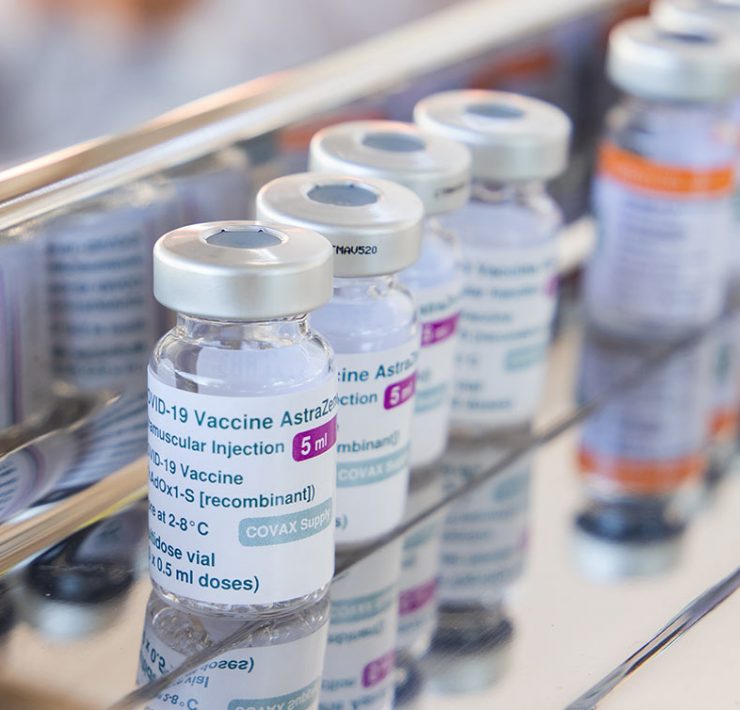“Go play outside!”—a classic parental command. While it could be motivated by a desire for peace and quiet, parents still are bettering their children’s health with this request. Plain and simple, being outside in the sun is good for the body. Our skin uses sunlight to produce vitamin D, which is essential for strong bones as it helps the body maximize the calcium in your diet.
Yet while it’s easy for the body to produce, vitamin D deficiency is a global public health concern, compounded by a global pandemic that has left billions of people isolated and quarantining inside their homes. A study published in 2020 estimates 1 billion people worldwide have vitamin D deficiency, and a whopping 50% of the population has vitamin D insufficiency.
Why is Vitamin D Important?
Vitamin D is a fat-soluble vitamin and is most commonly known to help promote healthy bones and teeth but its benefits are felt throughout the body. Nicknamed the sunshine vitamin, it supports immune, brain and nervous system health as well as cardiovascular health, regulates insulin levels, and influences the expression of genes involved in cancer development. It also promotes calcium absorption in the gut and prevents involuntary cramps and spasms in muscles.
Who Is At Risk?
The factors that lead to vitamin D deficiencies include age, mobility, skin color, and human breast milk. People who are unable to move about easily and freely are prevalent for vitamin D deficiency; this includes the elderly, obese patients, nursing home residents and hospitalized patients. In the United States, 35 percent of adults and 61 percent of the elderly population are vitamin D deficient. A recent study published in Journal of Clinical Endocrinology & Metabolism found that 80 percent of 200 COVID-19 patients in a hospital in Spain had vitamin D deficiency.
Because our skin converts sunshine into vitamin D, darker-skinned individuals are more at risk as well. Low vitamin D deficiency is also common in people who have milk allergies, are lactose intolerance, or are on a vegan diet. Lastly, the American Academy of Pediatrics recommends a vitamin D supplement for babies and infants who exclusively breastfeed, especially if the children have dark skin or receive minimal sun exposure.
What Are the Symptoms?
It’s easy to overlook symptoms—fatigue, muscle aches and cramps, bone pains, and mood changes—or attribute them to other health reasons. Last year, I was diagnosed with a vitamin D deficiency, but my tiredness and crankiness also went hand in hand with being six-months postpartum.
Many people over the age of 50 realize they are vitamin D deficient when their bones become thin and weaken and suffer fractures and breaks. According to the National Osteoporosis Foundation (NOF), 54 million adults have or at risk of developing osteoporosis, a condition that decreases bone mass and density and a long-term effect of lack of calcium and vitamin D deficiency. The NOF estimates that osteoporosis causes 2 million broken bones a year.
Children who are still in the period of skeletal growth need vitamin D for bone growth and to help avert rickets, a preventable disease that softens and deforms bones. If a child is developing rickets, he or she will experience incorrect growth patterns, weakness in muscles, and pain in joints.
How to Maintain Health Vitamin D Levels
The easiest way to absorb the sunshine vitamin is exposure to the sun. Because seasons, time of day, pollution, and even sunscreen affect the UV radiation exposure, experts suggest a range of 5 to 30 minutes of sun between 10am and 4pm daily or at least twice a week. Also, you must be outside: Sitting by a window or inside your car does not count.
As a result of the pandemic it’s likely that many of your outdoor activities have been curtailed or put entirely on hold. Your next line of vitamin D defense is in the form of supplements and food. Try Hum Nutrition’s Here Comes the Sun, Olly’s Hello Happy Gummy Worms, or NatureMade’s vitamin D options. Set by the Institute of Medicine’s Food and Nutrition Board, the recommended daily supplement intakes are as follows:
- Infants 0-12 months: 400 IU (international units) or 10 mcg (micrograms)
- Children 1-18 years and adults up to 70 years: 600 IU or 15 mcg
- Adults over 70 years: 800 IU or 20 mcg
- Pregnant or lactating women: 600 IU or 15 mcg
If you prefer to eat foods for your sources of vitamin D, there are only a few natural options. The skin of fatty fish (trout, salmon and tuna), fish liver oil, cheese, egg yolk and mushrooms have some amounts of vitamin D. Most milks, cereals and juices are fortified with vitamin D. There is also a UV-treated mushroom powder as a food additive. For babies, instant formula contains 40 to 100 IU of vitamin D per 100 kcal.
If you are seriously concerned about your vitamin D levels, visit your general practitioner and ask for a blood test. That is the only way to measure vitamin D levels in your blood. In the meantime, it can’t hurt to throw on that SPF and go outside and play!
Lola has served as an editor for a variety of luxury lifestyle magazines in South Florida and began her career as a copy editor for The Miami Herald. She holds a master’s in print journalism. Now she multitasks her new role as a mother with her role as a freelance writer.







